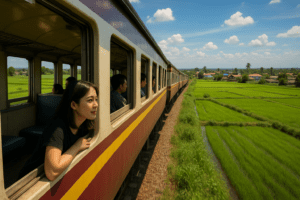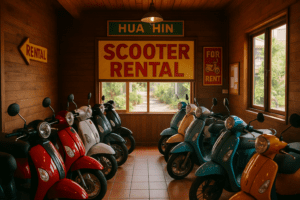Estimated reading time: 12 minutes
Key Takeaways
- Best overall weather: November through February offers ideal conditions with comfortable temperatures (27-30°C), minimal rainfall, and low humidity
- Three distinct seasons: Cool/dry (Nov-Feb), hot (Mar-Jun), and rainy monsoon (May-Oct) each offer different advantages
- Peak rainy months: September and October see 150-200mm rainfall but offer significant budget savings and fewer crowds
- Budget-friendly periods: Rainy season (July-October) provides 40-50% accommodation discounts for flexible travelers
- Shoulder seasons: March, May, June, and November balance good weather with reasonable prices and moderate crowds
Table of Contents
- Understanding Hua Hin’s Climate: The Three Key Seasons
- A Detailed Breakdown: Hua Hin Weather by Month
- Understanding the Hua Hin Rainy Season Months
- The Verdict: Uncovering the Best Time to Visit Hua Hin Weather-Wise
- A Guide to Hua Hin Cool Season Travel
- Pinpointing the Worst Time to Visit Hua Hin
- How to Choose Your Ideal Travel Dates
- Seasonal Packing and Preparation Guide
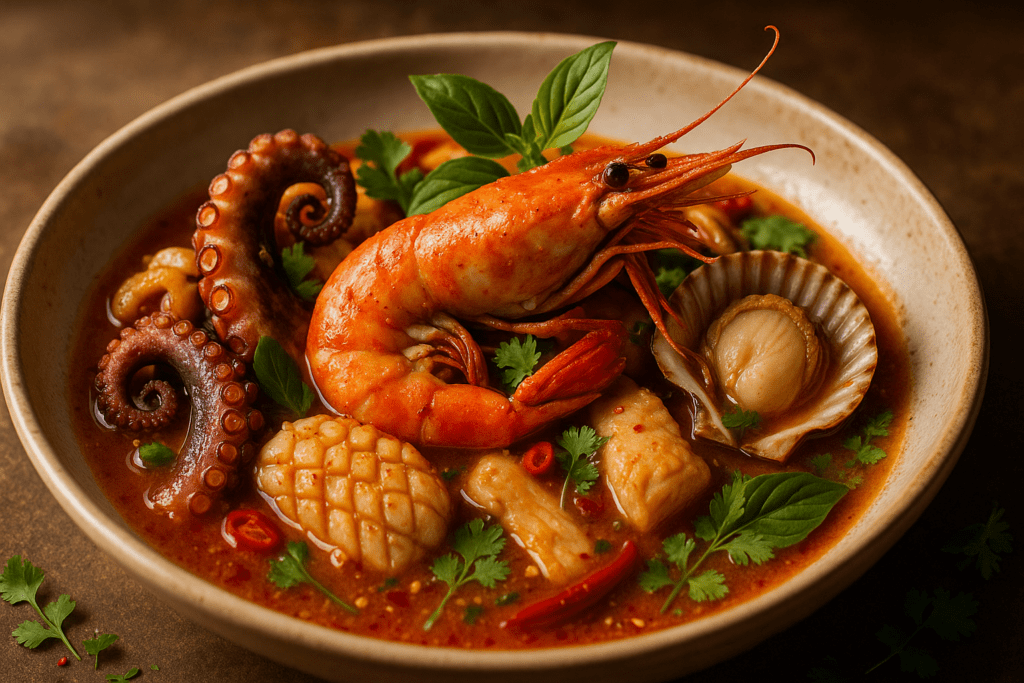
Planning a trip to Hua Hin and wondering when to visit Hua Hin for the perfect beach holiday? You’ve come to the right place. If this is your first time visiting Hua Hin, check out our First Time Visiting Hua Hin Guide for beginner tips on visa requirements, transport, and local customs.
Choosing the right time to visit this charming Thai coastal town can make or break your vacation. The difference between soggy disappointment and sun-soaked bliss often comes down to understanding the local weather patterns. Whether you’re dreaming of endless beach days, comfortable sightseeing, or snagging a budget-friendly deal, timing is everything.
This guide breaks down Hua Hin weather by month, helping you decide on the best time to visit Hua Hin weather-wise, understand the Hua Hin rainy season months, and discover the joys of Hua Hin cool season travel. No fluff, just the weather intel you need to plan an incredible trip.
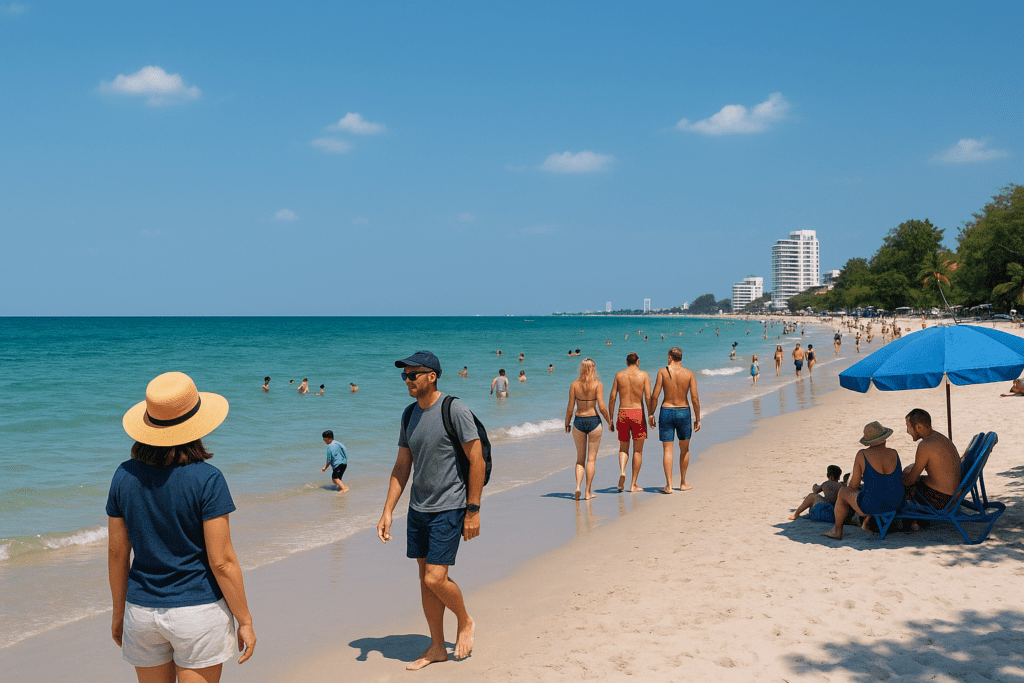
Understanding Hua Hin’s Climate: The Three Key Seasons
Hua Hin sits on the western shore of the Gulf of Thailand, roughly 200 kilometers south of Bangkok. This strategic location gives it a tropical monsoon climate that’s a bit more forgiving than some other Thai destinations. Learn more about Hua Hin’s climate patterns
The weather here follows a pretty predictable pattern with three distinct seasons. You’ve got the cool, dry season running from November through February, the hot season stretching from March to June, and the rainy monsoon season that dominates May or June through October.
What makes Hua Hin special is how these seasons blend into each other. Unlike places where weather changes happen overnight, here you get gradual transitions that give you some wiggle room with your travel dates.
Temperature-wise, you’re looking at daytime highs between 27°C and 34°C year-round. April and May are the real scorchers, while December through February offer the most comfortable conditions. Humidity follows a similar pattern – lowest during the cool months, absolutely brutal during the rains.
The key thing to remember? Even during the “worst” weather months, Hua Hin rarely sees all-day downpours. This isn’t England where it drizzles for weeks. When it rains here, it really rains, but then it stops.
A Detailed Breakdown: Hua Hin Weather by Month
Getting specific about Hua Hin weather by month helps you nail down exactly when to book those flights. Here’s what each month brings:
January serves up near-perfect conditions with highs around 29-30°C and lows of 22-23°C. You’ll see maybe 10-20mm of rainfall – basically nothing. The air feels dry and breezy, making it one of the most pleasant months to visit.
February cranks up the heat slightly to 30-31°C during the day, with nighttime temperatures around 23-24°C. Still dry as a bone with minimal rainfall. This is when you start feeling that the cool season is winding down.
March marks the transition into hot season territory. Expect 32°C highs and 25°C lows, with rainfall creeping up to 30-40mm. Still mostly dry, but you can feel the humidity building.
April is where things get serious. We’re talking 33-34°C during the day – the hottest month of the year. Nighttime doesn’t offer much relief at 25-26°C, and rainfall jumps to 40-60mm. The humidity starts becoming noticeable.
May maintains those scorching 33°C highs but sees rainfall spike to around 95mm. This is when the rainy season begins its slow entrance. Still very hot, but you’re getting those first taste-of-monsoon downpours.
June brings some relief from the heat with highs dropping to 32°C, though nights stay warm at 26°C. Rainfall increases to 80-100mm, and you’re officially in rainy season territory now.
July continues the monsoon pattern with 32°C highs and 25°C lows. Rainfall stays around 90-100mm, and the monsoon is fully established. Expect heavier, more frequent downpours.
August mirrors July pretty closely – 32°C days, 25°C nights, and 90-110mm of rainfall. This is peak humidity season, but also when the surrounding landscape looks absolutely gorgeous and lush.
September sees temperatures drop slightly to 31°C highs and 24°C lows, but rainfall peaks at 120-150mm. This is serious monsoon territory with high humidity and frequent storms.
October is the wettest month, hands down. Temperatures hover around 30°C during the day and 24°C at night, but you’re looking at 150-200mm of rainfall. Potential for some serious storms here.
November is when things start turning around. Highs of 29°C, lows of 23°C, and rainfall dropping to a more manageable 80mm. The air begins clearing, and you can feel the cool season approaching.
December delivers some of the year’s best weather. Temperatures hit that sweet spot of 29-30°C during the day and 22°C at night, with only 20-30mm of rainfall. This is what people picture when they dream of tropical paradise.
The transitional periods are worth noting too. Late October through mid-November is when the monsoon finally loosens its grip, making it a fantastic “shoulder season” choice for savvy travelers.
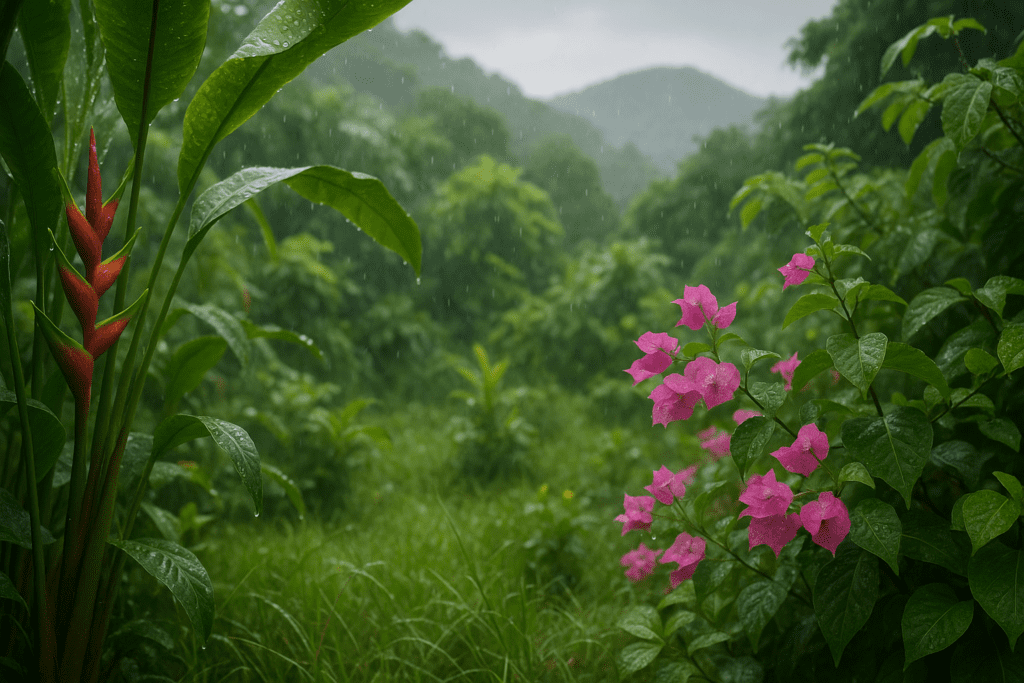
Understanding the Hua Hin Rainy Season Months
The Hua Hin rainy season months run from May through October, with September and October delivering the heaviest downpours. But before you write off this entire period, let’s talk about what “rainy season” actually means in Hua Hin.
This isn’t the endless drizzle you might imagine. Rain here tends to come in short, intense bursts – usually in the afternoon or evening – followed by clear periods. You might wake up to sunshine, enjoy a beautiful morning at the beach, then watch dramatic storm clouds roll in around 3 PM for an hour-long downpour that leaves everything fresh and clean.
The peak months of September and October see 120-200mm of rainfall respectively, which sounds intimidating until you realize it often falls in concentrated periods rather than constant drizzle. Still, these months do come with genuine challenges: high humidity that makes everything feel sticky, occasional flooding in low-lying areas, and choppier seas that affect water clarity and swimming conditions.
But here’s something most guidebooks don’t mention – the landscape during and just after the rainy season is absolutely stunning. The surrounding national parks and countryside become lush and vibrant green, creating photo opportunities that the dry season simply can’t match.
The practical reality is that rainy season travel requires more flexibility and indoor backup plans. That cooking class you’ve been wanting to try? Perfect rainy day activity. The massive shopping centers with air conditioning? Suddenly very appealing during a downpour.
Early rainy season – May through July – often provides a sweet spot where you get occasional refreshing showers without the peak monsoon intensity of September and October.
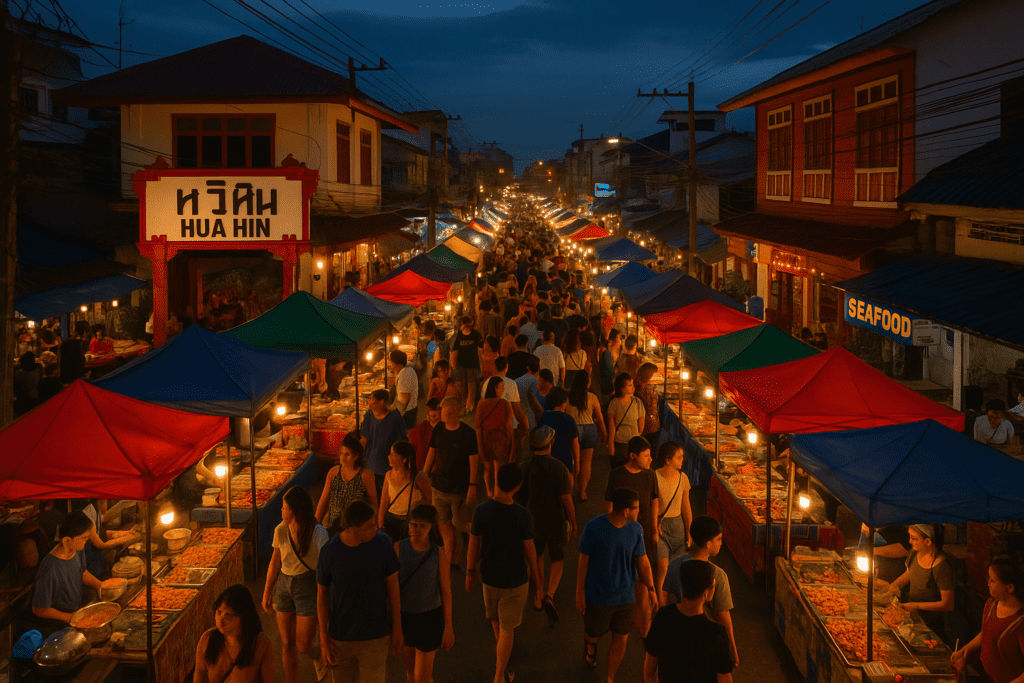
The Verdict: Uncovering the Best Time to Visit Hua Hin Weather-Wise
Let’s cut to the chase about the best time to visit Hua Hin weather-wise: November through February is your golden window. This isn’t travel blogger hyperbole – it’s based on cold, hard meteorological facts.
During these months, you get daytime highs hovering around a comfortable 27-30°C. That’s warm enough for beach days without feeling like you’re melting into the sand. The humidity drops significantly, making outdoor activities actually enjoyable instead of endurance tests.
But here’s the real kicker – rainfall during this period is practically nonexistent. We’re talking clear blue skies day after day, with maybe the occasional light shower that’s more refreshing than disruptive. Check current weather forecasts for Hua Hin
This weather translates into perfect conditions for just about everything Hua Hin offers. Beach days become genuinely relaxing affairs with calm seas and golden sunshine. The golf courses – and Hua Hin has some seriously impressive ones – are at their most playable without the oppressive heat or muddy conditions.
Evening activities shine during this period too. Those famous night markets become pleasant strolls instead of sweaty ordeals. Temple visits and national park explorations don’t leave you drenched in perspiration before noon.
For comparison on weather patterns in other parts of Thailand, see our Best Time to Visit Krabi guide.
A Guide to Hua Hin Cool Season Travel
Hua Hin cool season travel spans those magical months of November, December, January, and February. But calling it “cool” might be misleading for visitors from temperate climates – think “perfectly tropical” instead.
What makes this period so special goes beyond just comfortable temperatures. The lower humidity means the air feels fresh and clean, almost crisp by tropical standards. Mornings and evenings become genuinely pleasant times to be outdoors, perfect for cycling along the coastline or enjoying dinner with an ocean view.
The comfortable weather during these months makes exploring the surrounding areas an absolute joy. Hidden viewpoints, coastal roads, and local villages become accessible without the exhaustion factor. For those wanting complete freedom to discover at their own pace, renting a motorbike from Byklo.rent offers an unforgettable way to experience the region’s beauty during these perfect weather conditions.
This is also festival season in Hua Hin. New Year’s Eve brings spectacular fireworks displays right on the beach, while December often hosts the renowned Hua Hin Jazz Festival. The cool, dry evenings create ideal conditions for outdoor events and celebrations.
One thing to keep in mind – this is peak tourist season for good reason. Accommodation prices reflect the demand, and popular restaurants might require reservations. But honestly? The weather is so perfect that it’s usually worth paying a premium.
The shoulder months of November and February offer slight advantages. November still has occasional showers as the monsoon winds down, but prices haven’t hit their December-January peak yet. February sees temperatures starting to climb, but you avoid the peak-season crowds that descend in December and January.
Pinpointing the Worst Time to Visit Hua Hin
Let’s be honest about the worst time to visit Hua Hin: September and October present the most challenging conditions for typical travelers. These months combine peak rainfall with suffocating humidity and the highest risk of travel disruptions.
During this period, you’re looking at 150-200mm of monthly rainfall that often comes with legitimate storms. Not just heavy rain, but the kind of weather that cancels boat trips, makes hiking dangerous, and turns beach days into indoor affairs. The humidity reaches levels that make simple activities feel exhausting.
But wait – there’s a plot twist here.
September and October are actually fantastic months for budget travelers and those seeking authentic local experiences. Accommodation prices drop dramatically – we’re talking 40-50% off peak season rates. Popular attractions become pleasantly uncrowded, and you get to experience Hua Hin more like locals do.
The key is setting appropriate expectations and packing smart. Bring quality rain gear – not just a cheap umbrella that’ll flip inside out at the first strong wind. Pack quick-dry clothing and waterproof bags for electronics. Most importantly, build flexibility into your itinerary.
Having backup indoor activities becomes crucial. Hua Hin has excellent spas that are perfect for rainy afternoons, air-conditioned shopping centers, fascinating local markets with covered areas, and cooking schools that turn wet weather into learning opportunities.
One insider tip: even during the worst weather months, mornings often start clear and beautiful. Early risers can still catch gorgeous sunrises and enjoy outdoor activities before the afternoon storms roll in.
How to Choose Your Ideal Travel Dates
Choosing when to visit ultimately depends on balancing weather preferences, budget constraints, and crowd tolerance. Here’s how different types of travelers should approach the decision:
Sun seekers and beach lovers should stick to November through April for the best chance of consistent sunshine and calm seas. The dry season delivers those picture-perfect beach days you see in travel magazines.
Active travelers and golf enthusiasts will find the cool season (November to February) ideal for comfortable outdoor activities. Golf courses are in prime condition, hiking trails are accessible, and cycling doesn’t become an endurance test.
Budget-conscious travelers should consider the shoulder seasons of March, May, June, and November, or embrace the rainy season (July through October) for the best deals. Just pack accordingly and stay flexible.
The crowd factor plays a huge role too. December through February represents peak season with the highest prices and busiest attractions. You’ll need to book accommodations well in advance and expect popular restaurants to be packed.
May through October offers the quietest experience, with significantly fewer tourists and a more relaxed local atmosphere. For travelers wanting good weather with fewer crowds, March or November often provide the perfect balance. These months make ideal times to explore freely—with options like a motorbike rental from Byklo.rent or consulting our Motorbike Rental Thailand Guide to navigate less-congested roads and discover hidden local gems.
Consider your specific priorities. If perfect weather trumps everything else, pay the premium for cool season travel. If budget matters most and you don’t mind occasional rain, the monsoon months offer incredible value.
Seasonal Packing and Preparation Guide
Packing for Hua Hin varies dramatically depending on your travel dates. Here’s what each season demands:
Cool Season (November-February) calls for light layers since temperatures can vary between morning and evening. Pack swimwear for beach days, a light jacket for air-conditioned restaurants and evening breezes, sun hat, and quality sunglasses. This is peak season, so book accommodations and popular tours well in advance to avoid disappointment.
Hot Season (March-May) requires serious heat preparation. Focus on lightweight, breathable fabrics like cotton and linen. Bring high-SPF sunblock and reapply religiously – the sun here is no joke. A refillable water bottle becomes essential equipment, and cooling towels can provide relief during the hottest parts of the day.
Rainy Season (May-October) demands waterproof preparation. Pack quick-drying clothes that won’t stay soggy all day. Invest in a sturdy umbrella that can handle tropical downpours, not a flimsy tourist version. Water-resistant shoes or sandals are crucial since streets can flood quickly during heavy rain. Keep electronics in waterproof bags.
Year-round essentials include mosquito repellent (especially important after rainfall when mosquitoes multiply), high-quality sunscreen, and strategies for staying hydrated. The tropical sun here is intense even on cloudy days, and dehydration happens faster than you might expect.
Health considerations shift with the seasons too. Rainy season brings higher mosquito activity, making repellent crucial for preventing dengue fever and other mosquito-borne illnesses. Hot season requires extra attention to heat exhaustion prevention – schedule indoor activities during peak afternoon heat and drink water constantly.
Conclusion
The best time to visit Hua Hin weather-wise is undoubtedly November through February, when cool breezes, clear skies, and comfortable temperatures create ideal conditions for any activity. But here’s the thing – amazing experiences are possible year-round if you align your expectations with the realities of each season.
Whether you prioritize perfect weather, budget savings, or avoiding crowds, there’s a sweet spot that works for your travel style. Cool season delivers paradise but costs more and draws crowds. Hot season offers great weather with rising temperatures and reasonable prices. Rainy season provides budget-friendly adventures for flexible travelers who don’t mind occasional downpours.
When to visit Hua Hin ultimately comes down to your personal priorities, but now you have the weather knowledge to make an informed decision. The key is matching your travel dates to your goals and packing accordingly.
Start looking at flights, book that hotel, and get ready to enjoy everything this beautiful Thai resort town has to offer! Whether you’re planning beach days in perfect December weather or embracing the dramatic storms of October, Hua Hin has something magical waiting for every season—and don’t forget to book your next adventure ride by renting a motorbike from Byklo.rent to explore at your own pace.
Frequently Asked Questions
What is the absolute best month to visit Hua Hin?
December and January are considered the absolute best months to visit Hua Hin. These months offer perfect weather with temperatures around 27-30°C, minimal rainfall (10-30mm), low humidity, and clear skies. However, expect higher prices and more crowds during this peak season.
Is it safe to visit Hua Hin during the rainy season?
Yes, it’s generally safe to visit Hua Hin during the rainy season (May-October). Rain typically comes in short, intense bursts rather than all-day downpours. However, pack waterproof gear, stay flexible with outdoor plans, and be aware that September and October see the heaviest rainfall with potential for occasional flooding in low areas.
How much cheaper is it to visit during the rainy season?
Accommodation prices during the rainy season (especially September-October) can be 40-50% lower than peak season rates. Flights and activities also offer significant discounts. However, factor in potential indoor backup activities and weather-related cancellations when budgeting.
What should I pack for Hua Hin during different seasons?
Cool season (Nov-Feb): Light layers, swimwear, light jacket for evenings. Hot season (Mar-May): Lightweight breathable fabrics, high-SPF sunscreen, cooling towels. Rainy season (May-Oct): Quick-dry clothing, sturdy umbrella, waterproof bags for electronics, water-resistant footwear.
Can I still enjoy beach activities during the hot season?
Absolutely! March through May still offers excellent beach weather, though temperatures reach 32-34°C. Plan beach activities for early morning or late afternoon, seek shade during peak heat (11 AM-3 PM), stay hydrated, and use high-SPF sunscreen. Many travelers actually prefer the fewer crowds during this period.
How far in advance should I book during peak season?
For peak season travel (December-February), book accommodations and flights at least 2-3 months in advance to secure better rates and availability. Popular beachfront hotels and resorts can book up 4-6 months ahead, especially around Christmas and New Year’s holidays.
